Plastic Waste Management Size
Plastic Waste Management Market Growth Projections and Opportunities
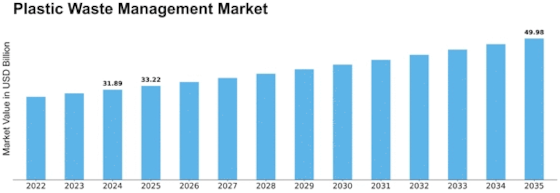

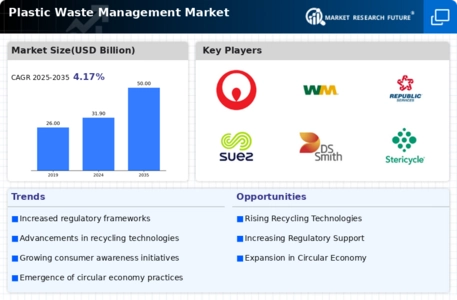

What is the expected market size of the Global Plastic Waste Management Market in 2024?
The Global Plastic Waste Management Market is expected to be valued at 31.89 USD billion in 2024.
What will be the projected market size of the Global Plastic Waste Management Market in 2035?
The market is projected to reach a value of 50.0 USD billion by 2035.
What is the expected CAGR for the Global Plastic Waste Management Market from 2025 to 2035?
The expected CAGR for the market during this period is 4.17%.
Which region is anticipated to hold the largest market share in 2024?
In 2024, North America is anticipated to hold the largest market share, valued at 9.56 USD billion.
What is the market size for Kerbside Collection in the Global Plastic Waste Management Market in 2024?
The market size for Kerbside Collection is valued at 12.0 USD Billion in 2024.
Who are the major players in the Global Plastic Waste Management Market?
Key players include Waste Management, Suez, Veolia, and Covanta, among others.
What is the forecasted market size for Asia Pacific in 2035?
The forecasted market size for Asia Pacific is expected to be 14.76 USD billion in 2035.
What is the projected market value for Community Recycling in 2035?
The projected market value for Community Recycling in 2035 is 5.5 USD billion.
Which sector within Plastic Waste Management is projected to grow fastest from 2025 to 2035?
Kerbside Collection is projected to grow significantly, reaching 18.0 USD billion by 2035.
What challenges could impact the Global Plastic Waste Management Market growth?
Challenges may include regulatory changes and evolving consumer perceptions regarding plastic waste.
As per MRFR analysis, the Plastic Waste Management Market Size was estimated at 31.89 USD Billion in 2024. The Plastic Waste Management industry is projected to grow from 33.22 USD Billion in 2025 to 49.98 USD Billion by 2035, exhibiting a compound annual growth rate (CAGR) of 4.17 during the forecast period 2025 - 2035.
The Plastic Waste Management Market is poised for substantial growth driven by technological advancements and increasing regulatory pressures.
| 2024 Market Size | 31.89 (USD Billion) |
| 2035 Market Size | 49.98 (USD Billion) |
| CAGR (2025 - 2035) | 4.17% |
| Largest Regional Market Share in 2024 | Asia Pacific |
<p>Veolia (FR), SUEZ (FR), Waste Management (US), Republic Services (US), Biffa (GB), Clean Harbors (US), Stericycle (US), Remondis (DE), FCC Environment (GB), Covanta (US)</p>
The Plastic Waste Management Market is currently experiencing a transformative phase, driven by increasing awareness of environmental issues and the pressing need for sustainable practices. Governments and organizations worldwide are implementing stricter regulations aimed at reducing plastic waste, which has led to a surge in innovative waste management solutions. This shift appears to be fostering collaboration among various stakeholders, including manufacturers, recyclers, and consumers, to create a more circular economy. As a result, the market is witnessing a growing emphasis on recycling technologies and waste-to-energy processes, which could potentially enhance resource recovery and minimize landfill dependency. Moreover, the rising demand for eco-friendly products is influencing the Plastic Waste Management Market significantly. Companies are increasingly investing in research and development to create biodegradable alternatives and improve recycling methods. This trend suggests a potential shift in consumer behavior, as individuals become more conscious of their environmental footprint. The integration of advanced technologies, such as artificial intelligence and blockchain, is also emerging as a key factor in optimizing waste management processes. Overall, the Plastic Waste Management Market is poised for substantial growth, driven by innovation and a collective commitment to sustainability.
The Plastic Waste Management Market is witnessing a notable trend towards the adoption of advanced recycling technologies. Innovations such as chemical recycling and enhanced sorting systems are being developed to improve the efficiency and effectiveness of plastic waste processing. These technologies not only increase the volume of recyclable materials but also enhance the quality of recycled products, making them more appealing to manufacturers.
There is a growing trend of governments worldwide implementing stringent regulations aimed at reducing plastic waste. These policies often include bans on single-use plastics and incentives for recycling initiatives. Such regulatory frameworks are likely to drive investment in waste management infrastructure and encourage businesses to adopt sustainable practices, thereby reshaping the Plastic Waste Management Market.
An increasing awareness among consumers regarding the environmental impact of plastic waste is influencing market dynamics. This heightened consciousness is leading to a shift in purchasing behaviors, with more individuals opting for sustainable products and supporting brands that prioritize eco-friendly practices. As a result, companies are compelled to adapt their strategies to meet the evolving expectations of environmentally conscious consumers.
<p>The increasing emphasis on sustainable practices and regulatory frameworks is reshaping the landscape of plastic waste management, driving innovation and collaboration across various sectors.</p>
Growing environmental concerns are significantly influencing the Plastic Waste Management Market. Public awareness regarding the detrimental effects of plastic pollution is prompting both consumers and businesses to seek sustainable alternatives. This shift in consumer behavior is leading to increased demand for eco-friendly products and effective waste management solutions. Market data indicates that approximately 70 percent of consumers are willing to pay a premium for products that are packaged sustainably. Consequently, companies are adapting their strategies to align with these preferences, thereby driving innovation and investment in the Plastic Waste Management Market.
Regulatory frameworks are becoming increasingly stringent, driving the Plastic Waste Management Market towards more sustainable practices. Governments are enacting laws that mandate recycling and impose penalties for non-compliance. For instance, several countries have introduced extended producer responsibility (EPR) regulations, requiring manufacturers to take responsibility for the entire lifecycle of their products. This shift is compelling companies to invest in sustainable waste management solutions. As a result, the market is projected to grow at a compound annual growth rate (CAGR) of 5.5 percent over the next decade, reflecting the influence of these regulatory measures on the Plastic Waste Management Market.
Many corporations are adopting sustainability initiatives that directly impact the Plastic Waste Management Market. As businesses recognize the importance of corporate social responsibility, they are increasingly committing to reducing their plastic footprint. This includes investing in recycling technologies and developing sustainable packaging solutions. Reports suggest that companies that prioritize sustainability are likely to see a 20 percent increase in customer loyalty. This trend is not only beneficial for the environment but also enhances brand reputation, thereby driving growth in the Plastic Waste Management Market.
Investment in waste management infrastructure is crucial for the advancement of the Plastic Waste Management Market. Governments and private entities are allocating significant funds to improve recycling facilities and waste processing technologies. Enhanced infrastructure facilitates better collection, sorting, and recycling of plastic waste, which is essential for achieving higher recycling rates. Recent estimates indicate that investments in waste management infrastructure could exceed 100 billion dollars over the next decade. This influx of capital is expected to bolster the efficiency and effectiveness of the Plastic Waste Management Market.
The Plastic Waste Management Market is experiencing a surge in technological innovations that enhance recycling processes. Advanced sorting technologies, such as AI-driven systems, are being implemented to improve the efficiency of material recovery facilities. These innovations not only streamline operations but also increase the purity of recycled materials, making them more valuable in the market. Furthermore, the development of biodegradable plastics and advanced chemical recycling methods is gaining traction. According to recent data, the adoption of these technologies could potentially increase recycling rates by up to 30 percent over the next five years, thereby significantly impacting the Plastic Waste Management Market.
<p>In the Plastic Waste Management Market, Kerbside Collection emerges as the largest segment, driven by the convenience it offers to households and businesses alike. This traditional method facilitates easy collection of recyclable materials at the curbside, thus encouraging higher participation rates among the general public. Following closely, Drop-Off Centers and Commercial Collection make up significant shares, providing specialized options for businesses and eco-conscious consumers.</p>
<p>Kerbside Collection (Dominant) vs. Curbside Recycling (Emerging)</p>
<p>Kerbside Collection stands out as the dominant method in plastic waste management, thanks to its established infrastructure and widespread acceptance among residents. It operates efficiently in urban and suburban areas, providing timely pickups and reducing illegal dumping. On the other hand, Curbside Recycling is an emerging segment, rapidly gaining traction as municipalities integrate advanced sorting technologies. This shift is fueled by growing environmental awareness and the increase in regulations promoting material recovery, making curbside recycling a vital player in the future of waste management.</p>
<p>The Plastic Waste Management Market exhibits a diverse range of recycling technologies with mechanical recycling holding the largest market share. This traditional method efficiently processes plastic waste through shredding, washing, and reprocessing into usable materials. Chemical recycling, on the other hand, is emerging rapidly, leveraging advanced technologies to break down plastics into their monomers, significantly increasing the recyclability of complex plastic products. Growth trends in this segment are driven by rising environmental awareness, regulatory pressures for sustainable waste management solutions, and technological advancements that enhance efficiency. Mechanical recycling remains popular due to its established practices, yet the rapid adoption of chemical recycling technologies signifies a shift in the industry aiming to improve overall recycling rates and reduce plastic pollution. This dynamic contributes to a competitive landscape where both recycling methods are vying for market relevance.</p>
<p>Mechanical Recycling (Dominant) vs. Chemical Recycling (Emerging)</p>
<p>Mechanical recycling plays a pivotal role in the Plastic Waste Management Market by offering practical, cost-effective solutions to address plastic waste. This technology dominates by converting post-consumer plastics into reusable raw materials without altering their chemical structure, making it widely applicable across various plastic types. In contrast, chemical recycling is gaining traction as an emerging technology, designed to handle more complex plastics that mechanical processes struggle with. By utilizing depolymerization methods, it can turn waste back into valuable feedstocks, positioning it as a complement to mechanical recycling. The innovation in this space encourages investment and research, promising to redefine recycling standards and enhance plastic waste management efficiency.</p>
<p>In the Plastic Waste Management Market, Polyethylene Terephthalate (PET) leads as the largest segment, capturing a significant share due to its widespread use in packaging and consumer products. High-Density Polyethylene (HDPE) and Low-Density Polyethylene (LDPE) follow closely, together forming a considerable part of the market fabric. Polyvinyl Chloride (PVC) has shown consistent demand in construction and plumbing, driving its relevance, while Polypropylene (PP) emerges as a notable player, increasing its market presence steadily overall.</p>
<p>Polyethylene Terephthalate (Dominant) vs. Polypropylene (Emerging)</p>
<p>Polyethylene Terephthalate (PET) is quintessential in the Plastic Waste Management landscape, recognized for its recyclability and extensive use in beverage containers and packaging solutions. Its dominant position stems from robust recycling technologies and consumer recycling initiatives fueling its lifecycle. On the other hand, Polypropylene (PP) is marked as an emerging force in this sector; its versatility and lightweight nature make it popular in a myriad of applications, including automotive and food packaging. As environmental regulations tighten, the increased adoption of PP reflects growing sustainability awareness, promising a future where both materials coexist with distinct strengths in addressing plastic waste issues.</p>
<p>In the Plastic Waste Management Market, the end use application segment is predominantly driven by packaging, which holds the largest share of the market. This segment encompasses a wide range of applications, including food and beverage packaging, industrial packaging, and consumer goods packaging. Following closely are sectors like textiles, construction, automotive, and consumer goods, each contributing significantly but with a smaller market share compared to packaging. Textiles are emerging quickly as a critical area, fueled by increasing awareness of environmental sustainability and innovations in recycling technologies.</p>
<p>Packaging (Dominant) vs. Textiles (Emerging)</p>
<p>The packaging segment stands out as the dominant force in the Plastic Waste Management Market, characterized by its extensive use in various applications such as wrappers, containers, and films. This sector is bolstered by high consumer demand and a shift towards recyclable materials in response to global sustainability goals. On the other hand, textiles are emerging as a significant player, driven by innovation in recycling methods and increasing consumer interest in sustainable fashion. The textile application of plastic waste is gaining traction as manufacturers adopt alternative materials for production, thus expanding the market and enhancing eco-conscious consumption.</p>
The Plastic Waste Management Market is poised to witness notable growth across regional segments, with varying valuations reflecting each region's specific needs and strategies. In 2024, North America leads with a market value of 9.56 USD billion, representing a significant portion of the global market due to stringent environmental regulations and advanced recycling technologies. Europe follows closely with a valuation of 8.46 USD billion in the same year, bolstered by strong governmental policies promoting sustainability.
The Asia Pacific region, valued at 9.87 USD billion, is also critical as it grapples with high plastic waste generation rates and is actively developing waste management infrastructures to combat this challenge.
South America, while smaller at 2.63 USD billion, presents opportunities for growth due to increasing awareness of plastic waste issues. The Middle East and Africa, valued at 1.37 USD billion, face unique challenges, including limited waste management frameworks, yet they are gradually improving with international collaborations. The diverse economic landscapes and regulatory environments across these regions create both challenges and opportunities, highlighting the need for tailored strategies in the Plastic Waste Management Market.
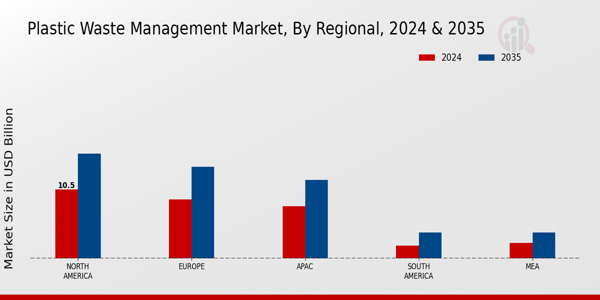
Source: Primary Research, Secondary Research, MRFR Database, and Analyst Review
The Plastic Waste Management Market has seen significant growth and development, driven by increasing awareness of environmental sustainability and regulatory pressures to reduce plastic waste. Key players in the market are focusing on innovative waste management solutions, advanced recycling technologies, and effective waste collection systems to enhance their market positions. The competitive landscape is characterized by a mix of established firms and emerging startups that are leveraging technology to offer more efficient and sustainable options for plastic waste management.
This competitive insight highlights the strategies adopted by companies to differentiate their services, such as collaboration with municipalities, investments in recycling infrastructure, and the adoption of cutting-edge technologies to streamline operations and improve waste processing efficiencies.
Waste Management has also established itself as a key player in the Plastic Waste Management Market, offering a comprehensive portfolio of services that include solid waste collection, recycling, and recovery. The company has developed innovative solutions aimed at increasing recycling rates and minimizing the amount of plastic waste sent to landfills. Waste Management’s extensive network and operational scale enable efficient service delivery and strong customer relationships globally, underpinning its market strength. With ongoing investments in technological advancements, such as waste-to-energy conversion and more sophisticated recycling technologies, Waste Management is well-positioned to address the growing challenges of plastic waste.
The company has pursued strategic mergers and acquisitions, enabling it to expand its capabilities and market reach further, thereby enhancing its overall effectiveness in managing plastic waste on a global scale.
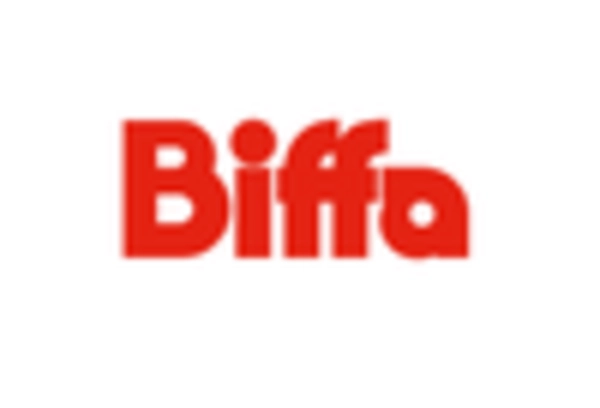
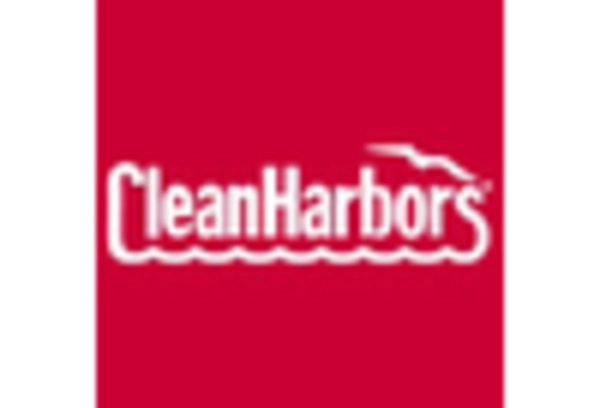
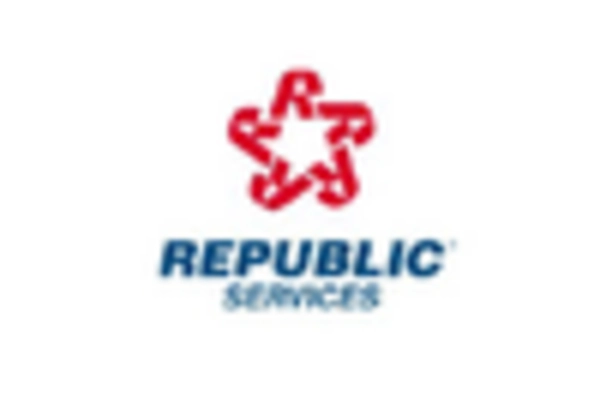
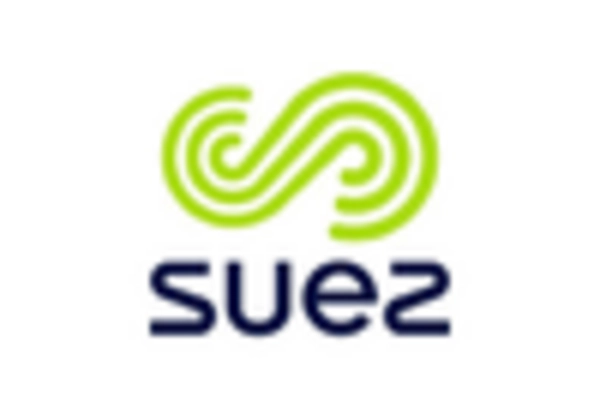
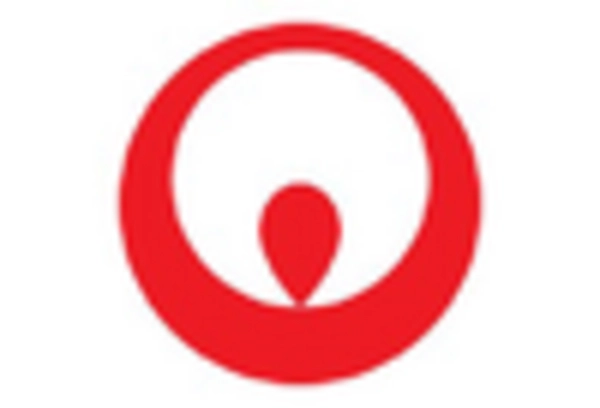
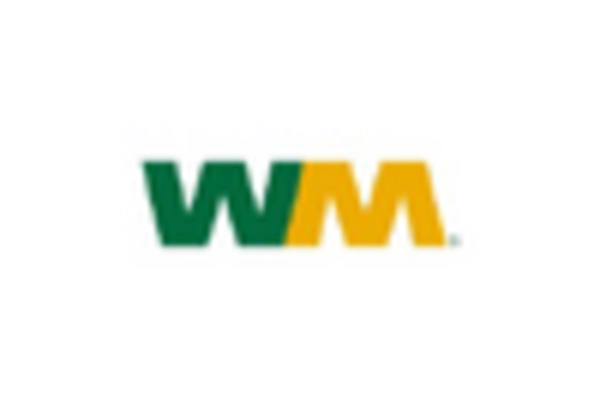
The Plastic Waste Management Market is still changing as of mid-2025, with a growing focus on sustainability, new ideas, and circular economy practices. Waste Management and Republic Services, for example, are putting more money into advanced recycling and landfill diversion strategies. This is part of a larger trend in the industry toward eco-efficiency.
Veolia Environnement has built a notable position in the Plastic Waste Management Market through the development of extensive recycling facilities, innovative closed-loop plastic solutions, and substantial investments in mechanical and chemical recycling technologies. Through its strategic global collaborations and research-focused initiatives, the company has successfully processed thousands of tons of plastic waste each year, solidifying its position as a leader in sustainability within the industry.
As governments make environmental rules stricter, the need for scalable plastic waste solutions keeps bringing in money and new technology.
<p>The Plastic Waste Management Market is projected to grow at a 4.17% CAGR from 2024 to 2035, driven by regulatory pressures, technological advancements, and increasing consumer awareness.</p>
New opportunities lie in:
<p>By 2035, the market is expected to be robust, driven by innovation and sustainability initiatives.</p>
| MARKET SIZE 2024 | 31.89(USD Billion) |
| MARKET SIZE 2025 | 33.22(USD Billion) |
| MARKET SIZE 2035 | 49.98(USD Billion) |
| COMPOUND ANNUAL GROWTH RATE (CAGR) | 4.17% (2024 - 2035) |
| REPORT COVERAGE | Revenue Forecast, Competitive Landscape, Growth Factors, and Trends |
| BASE YEAR | 2024 |
| Market Forecast Period | 2025 - 2035 |
| Historical Data | 2019 - 2024 |
| Market Forecast Units | USD Billion |
| Key Companies Profiled | Market analysis in progress |
| Segments Covered | Market segmentation analysis in progress |
| Key Market Opportunities | Integration of advanced recycling technologies enhances efficiency in the Plastic Waste Management Market. |
| Key Market Dynamics | Rising regulatory pressures and technological advancements drive innovation in plastic waste management solutions. |
| Countries Covered | North America, Europe, APAC, South America, MEA |
What is the expected market size of the Global Plastic Waste Management Market in 2024?
The Global Plastic Waste Management Market is expected to be valued at 31.89 USD billion in 2024.
What will be the projected market size of the Global Plastic Waste Management Market in 2035?
The market is projected to reach a value of 50.0 USD billion by 2035.
What is the expected CAGR for the Global Plastic Waste Management Market from 2025 to 2035?
The expected CAGR for the market during this period is 4.17%.
Which region is anticipated to hold the largest market share in 2024?
In 2024, North America is anticipated to hold the largest market share, valued at 9.56 USD billion.
What is the market size for Kerbside Collection in the Global Plastic Waste Management Market in 2024?
The market size for Kerbside Collection is valued at 12.0 USD Billion in 2024.
Who are the major players in the Global Plastic Waste Management Market?
Key players include Waste Management, Suez, Veolia, and Covanta, among others.
What is the forecasted market size for Asia Pacific in 2035?
The forecasted market size for Asia Pacific is expected to be 14.76 USD billion in 2035.
What is the projected market value for Community Recycling in 2035?
The projected market value for Community Recycling in 2035 is 5.5 USD billion.
Which sector within Plastic Waste Management is projected to grow fastest from 2025 to 2035?
Kerbside Collection is projected to grow significantly, reaching 18.0 USD billion by 2035.
What challenges could impact the Global Plastic Waste Management Market growth?
Challenges may include regulatory changes and evolving consumer perceptions regarding plastic waste.
Kerbside Collection
Drop-Off Centers
Commercial Collection
Curbside Recycling
Community Recycling
Mechanical Recycling
Chemical Recycling
Energy Recovery
Biological Recycling
Polyethylene Terephthalate
High-Density Polyethylene
Polyvinyl Chloride
Low-Density Polyethylene
Polypropylene
Packaging
Textiles
Construction
Automotive
Consumer Goods
North America
Europe
South America
Asia Pacific
Middle East and Africa
North America Outlook (USD Billion, 2019-2035)
North America Plastic Waste Management Market by Waste Collection Method Type
Kerbside Collection
Drop-Off Centers
Commercial Collection
Curbside Recycling
Community Recycling
North America Plastic Waste Management Market by Recycling Technology Type
Mechanical Recycling
Chemical Recycling
Energy Recovery
Biological Recycling
North America Plastic Waste Management Market by Plastic Type
Polyethylene Terephthalate
High-Density Polyethylene
Polyvinyl Chloride
Low-Density Polyethylene
Polypropylene
North America Plastic Waste Management Market by End Use Application Type
Packaging
Textiles
Construction
Automotive
Consumer Goods
North America Plastic Waste Management Market by Regional Type
US
Canada
US Outlook (USD Billion, 2019-2035)
US Plastic Waste Management Market by Waste Collection Method Type
Kerbside Collection
Drop-Off Centers
Commercial Collection
Curbside Recycling
Community Recycling
US Plastic Waste Management Market by Recycling Technology Type
Mechanical Recycling
Chemical Recycling
Energy Recovery
Biological Recycling
US Plastic Waste Management Market by Plastic Type
Polyethylene Terephthalate
High-Density Polyethylene
Polyvinyl Chloride
Low-Density Polyethylene
Polypropylene
US Plastic Waste Management Market by End Use Application Type
Packaging
Textiles
Construction
Automotive
Consumer Goods
CANADA Outlook (USD Billion, 2019-2035)
CANADA Plastic Waste Management Market by Waste Collection Method Type
Kerbside Collection
Drop-Off Centers
Commercial Collection
Curbside Recycling
Community Recycling
CANADA Plastic Waste Management Market by Recycling Technology Type
Mechanical Recycling
Chemical Recycling
Energy Recovery
Biological Recycling
CANADA Market by Plastic Type
Polyethylene Terephthalate
High-Density Polyethylene
Polyvinyl Chloride
Low-Density Polyethylene
Polypropylene
CANADA Plastic Waste Management Market by End Use Application Type
Packaging
Textiles
Construction
Automotive
Consumer Goods
Europe Outlook (USD Billion, 2019-2035)
Europe Plastic Waste Management Market by Waste Collection Method Type
Kerbside Collection
Drop-Off Centers
Commercial Collection
Curbside Recycling
Community Recycling
Europe Plastic Waste Management Market by Recycling Technology Type
Mechanical Recycling
Chemical Recycling
Energy Recovery
Biological Recycling
Europe Market by Plastic Type
Polyethylene Terephthalate
High-Density Polyethylene
Polyvinyl Chloride
Low-Density Polyethylene
Polypropylene
Europe Market by End Use Application Type
Packaging
Textiles
Construction
Automotive
Consumer Goods
Europe Market by Regional Type
Germany
UK
France
Russia
Italy
Spain
Rest of Europe
GERMANY Outlook (USD Billion, 2019-2035)
GERMANY Market by Waste Collection Method Type
Kerbside Collection
Drop-Off Centers
Commercial Collection
Curbside Recycling
Community Recycling
GERMANY Market by Recycling Technology Type
Mechanical Recycling
Chemical Recycling
Energy Recovery
Biological Recycling
GERMANY Market by Plastic Type
Polyethylene Terephthalate
High-Density Polyethylene
Polyvinyl Chloride
Low-Density Polyethylene
Polypropylene
GERMANY Market by End Use Application Type
Packaging
Textiles
Construction
Automotive
Consumer Goods
UK Outlook (USD Billion, 2019-2035)
UK Plastic Waste Management Market by Waste Collection Method Type
Kerbside Collection
Drop-Off Centers
Commercial Collection
Curbside Recycling
Community Recycling
UK Plastic Waste Management Market by Recycling Technology Type
Mechanical Recycling
Chemical Recycling
Energy Recovery
Biological Recycling
UK Plastic Waste Management Market by Plastic Type
Polyethylene Terephthalate
High-Density Polyethylene
Polyvinyl Chloride
Low-Density Polyethylene
Polypropylene
UK Plastic Waste Management Market by End Use Application Type
Packaging
Textiles
Construction
Automotive
Consumer Goods
FRANCE Outlook (USD Billion, 2019-2035)
FRANCE Plastic Waste Management Market by Waste Collection Method Type
Kerbside Collection
Drop-Off Centers
Commercial Collection
Curbside Recycling
Community Recycling
FRANCE Plastic Waste Management Market by Recycling Technology Type
Mechanical Recycling
Chemical Recycling
Energy Recovery
Biological Recycling
FRANCE Plastic Waste Management Market by Plastic Type
Polyethylene Terephthalate
High-Density Polyethylene
Polyvinyl Chloride
Low-Density Polyethylene
Polypropylene
FRANCE Plastic Waste Management Market by End Use Application Type
Packaging
Textiles
Construction
Automotive
Consumer Goods
RUSSIA Outlook (USD Billion, 2019-2035)
RUSSIA Plastic Waste Management Market by Waste Collection Method Type
Kerbside Collection
Drop-Off Centers
Commercial Collection
Curbside Recycling
Community Recycling
RUSSIA Plastic Waste Management Market by Recycling Technology Type
Mechanical Recycling
Chemical Recycling
Energy Recovery
Biological Recycling
RUSSIA Plastic Waste Management Market by Plastic Type
Polyethylene Terephthalate
High-Density Polyethylene
Polyvinyl Chloride
Low-Density Polyethylene
Polypropylene
RUSSIA Plastic Waste Management Market by End Use Application Type
Packaging
Textiles
Construction
Automotive
Consumer Goods
ITALY Outlook (USD Billion, 2019-2035)
ITALY Plastic Waste Management Market by Waste Collection Method Type
Kerbside Collection
Drop-Off Centers
Commercial Collection
Curbside Recycling
Community Recycling
ITALY Plastic Waste Management Market by Recycling Technology Type
Mechanical Recycling
Chemical Recycling
Energy Recovery
Biological Recycling
ITALY Plastic Waste Management Market by Plastic Type
Polyethylene Terephthalate
High-Density Polyethylene
Polyvinyl Chloride
Low-Density Polyethylene
Polypropylene
ITALY Plastic Waste Management Market by End Use Application Type
Packaging
Textiles
Construction
Automotive
Consumer Goods
SPAIN Outlook (USD Billion, 2019-2035)
SPAIN Plastic Waste Management Market by Waste Collection Method Type
Kerbside Collection
Drop-Off Centers
Commercial Collection
Curbside Recycling
Community Recycling
SPAIN Plastic Waste Management Market by Recycling Technology Type
Mechanical Recycling
Chemical Recycling
Energy Recovery
Biological Recycling
SPAIN Plastic Waste Management Market by Plastic Type
Polyethylene Terephthalate
High-Density Polyethylene
Polyvinyl Chloride
Low-Density Polyethylene
Polypropylene
SPAIN Plastic Waste Management Market by End Use Application Type
Packaging
Textiles
Construction
Automotive
Consumer Goods
REST OF EUROPE Outlook (USD Billion, 2019-2035)
REST OF EUROPE Plastic Waste Management Market by Waste Collection Method Type
Kerbside Collection
Drop-Off Centers
Commercial Collection
Curbside Recycling
Community Recycling
REST OF EUROPE Plastic Waste Management Market by Recycling Technology Type
Mechanical Recycling
Chemical Recycling
Energy Recovery
Biological Recycling
REST OF EUROPE Plastic Waste Management Market by Plastic Type
Polyethylene Terephthalate
High-Density Polyethylene
Polyvinyl Chloride
Low-Density Polyethylene
Polypropylene
REST OF EUROPE Plastic Waste Management Market by End Use Application Type
Packaging
Textiles
Construction
Automotive
Consumer Goods
APAC Outlook (USD Billion, 2019-2035)
APAC Plastic Waste Management Market by Waste Collection Method Type
Kerbside Collection
Drop-Off Centers
Commercial Collection
Curbside Recycling
Community Recycling
APAC Plastic Waste Management Market by Recycling Technology Type
Mechanical Recycling
Chemical Recycling
Energy Recovery
Biological Recycling
APAC Plastic Waste Management Market by Plastic Type
Polyethylene Terephthalate
High-Density Polyethylene
Polyvinyl Chloride
Low-Density Polyethylene
Polypropylene
APAC Plastic Waste Management Market by End Use Application Type
Packaging
Textiles
Construction
Automotive
Consumer Goods
APAC Plastic Waste Management Market by Regional Type
China
India
Japan
South Korea
Malaysia
Thailand
Indonesia
Rest of APAC
CHINA Outlook (USD Billion, 2019-2035)
CHINA Plastic Waste Management Market by Waste Collection Method Type
Kerbside Collection
Drop-Off Centers
Commercial Collection
Curbside Recycling
Community Recycling
CHINA Plastic Waste Management Market by Recycling Technology Type
Mechanical Recycling
Chemical Recycling
Energy Recovery
Biological Recycling
CHINA Plastic Waste Management Market by Plastic Type
Polyethylene Terephthalate
High-Density Polyethylene
Polyvinyl Chloride
Low-Density Polyethylene
Polypropylene
CHINA Plastic Waste Management Market by End Use Application Type
Packaging
Textiles
Construction
Automotive
Consumer Goods
INDIA Outlook (USD Billion, 2019-2035)
INDIA Plastic Waste Management Market by Waste Collection Method Type
Kerbside Collection
Drop-Off Centers
Commercial Collection
Curbside Recycling
Community Recycling
INDIA Plastic Waste Management Market by Recycling Technology Type
Mechanical Recycling
Chemical Recycling
Energy Recovery
Biological Recycling
INDIA Plastic Waste Management Market by Plastic Type
Polyethylene Terephthalate
High-Density Polyethylene
Polyvinyl Chloride
Low-Density Polyethylene
Polypropylene
INDIA Market by End Use Application Type
Packaging
Textiles
Construction
Automotive
Consumer Goods
JAPAN Outlook (USD Billion, 2019-2035)
JAPAN Market by Waste Collection Method Type
Kerbside Collection
Drop-Off Centers
Commercial Collection
Curbside Recycling
Community Recycling
JAPAN Market by Recycling Technology Type
Mechanical Recycling
Chemical Recycling
Energy Recovery
Biological Recycling
JAPAN Market by Plastic Type
Polyethylene Terephthalate
High-Density Polyethylene
Polyvinyl Chloride
Low-Density Polyethylene
Polypropylene
JAPAN Market by End Use Application Type
Packaging
Textiles
Construction
Automotive
Consumer Goods
SOUTH KOREA Outlook (USD Billion, 2019-2035)
SOUTH KOREA Market by Waste Collection Method Type
Kerbside Collection
Drop-Off Centers
Commercial Collection
Curbside Recycling
Community Recycling
SOUTH KOREA Market by Recycling Technology Type
Mechanical Recycling
Chemical Recycling
Energy Recovery
Biological Recycling
SOUTH KOREA Market by Plastic Type
Polyethylene Terephthalate
High-Density Polyethylene
Polyvinyl Chloride
Low-Density Polyethylene
Polypropylene
SOUTH KOREA Market by End Use Application Type
Packaging
Textiles
Construction
Automotive
Consumer Goods
MALAYSIA Outlook (USD Billion, 2019-2035)
MALAYSIA Market by Waste Collection Method Type
Kerbside Collection
Drop-Off Centers
Commercial Collection
Curbside Recycling
Community Recycling
MALAYSIA Market by Recycling Technology Type
Mechanical Recycling
Chemical Recycling
Energy Recovery
Biological Recycling
MALAYSIA Market by Plastic Type
Polyethylene Terephthalate
High-Density Polyethylene
Polyvinyl Chloride
Low-Density Polyethylene
Polypropylene
MALAYSIA Market by End Use Application Type
Packaging
Textiles
Construction
Automotive
Consumer Goods
THAILAND Outlook (USD Billion, 2019-2035)
THAILAND Market by Waste Collection Method Type
Kerbside Collection
Drop-Off Centers
Commercial Collection
Curbside Recycling
Community Recycling
THAILAND Market by Recycling Technology Type
Mechanical Recycling
Chemical Recycling
Energy Recovery
Biological Recycling
THAILAND Market by Plastic Type
Polyethylene Terephthalate
High-Density Polyethylene
Polyvinyl Chloride
Low-Density Polyethylene
Polypropylene
THAILAND Market by End Use Application Type
Packaging
Textiles
Construction
Automotive
Consumer Goods
INDONESIA Outlook (USD Billion, 2019-2035)
INDONESIA Market by Waste Collection Method Type
Kerbside Collection
Drop-Off Centers
Commercial Collection
Curbside Recycling
Community Recycling
INDONESIA Market by Recycling Technology Type
Mechanical Recycling
Chemical Recycling
Energy Recovery
Biological Recycling
INDONESIA Market by Plastic Type
Polyethylene Terephthalate
High-Density Polyethylene
Polyvinyl Chloride
Low-Density Polyethylene
Polypropylene
INDONESIA Market by End Use Application Type
Packaging
Textiles
Construction
Automotive
Consumer Goods
REST OF APAC Outlook (USD Billion, 2019-2035)
REST OF APAC Market by Waste Collection Method Type
Kerbside Collection
Drop-Off Centers
Commercial Collection
Curbside Recycling
Community Recycling
REST OF APAC Market by Recycling Technology Type
Mechanical Recycling
Chemical Recycling
Energy Recovery
Biological Recycling
REST OF APAC Market by Plastic Type
Polyethylene Terephthalate
High-Density Polyethylene
Polyvinyl Chloride
Low-Density Polyethylene
Polypropylene
REST OF APAC Market by End Use Application Type
Packaging
Textiles
Construction
Automotive
Consumer Goods
South America Outlook (USD Billion, 2019-2035)
South America Market by Waste Collection Method Type
Kerbside Collection
Drop-Off Centers
Commercial Collection
Curbside Recycling
Community Recycling
South America Market by Recycling Technology Type
Mechanical Recycling
Chemical Recycling
Energy Recovery
Biological Recycling
South America Market by Plastic Type
Polyethylene Terephthalate
High-Density Polyethylene
Polyvinyl Chloride
Low-Density Polyethylene
Polypropylene
South America Plastic Waste Management Market by End Use Application Type
Packaging
Textiles
Construction
Automotive
Consumer Goods
South America Market by Regional Type
Brazil
Mexico
Argentina
Rest of South America
BRAZIL Outlook (USD Billion, 2019-2035)
BRAZIL Market by Waste Collection Method Type
Kerbside Collection
Drop-Off Centers
Commercial Collection
Curbside Recycling
Community Recycling
BRAZIL Market by Recycling Technology Type
Mechanical Recycling
Chemical Recycling
Energy Recovery
Biological Recycling
BRAZIL Market by Plastic Type
Polyethylene Terephthalate
High-Density Polyethylene
Polyvinyl Chloride
Low-Density Polyethylene
Polypropylene
BRAZIL Market by End Use Application Type
Packaging
Textiles
Construction
Automotive
Consumer Goods
MEXICO Outlook (USD Billion, 2019-2035)
MEXICO Market by Waste Collection Method Type
Kerbside Collection
Drop-Off Centers
Commercial Collection
Curbside Recycling
Community Recycling
MEXICO Market by Recycling Technology Type
Mechanical Recycling
Chemical Recycling
Energy Recovery
Biological Recycling
MEXICO Market by Plastic Type
Polyethylene Terephthalate
High-Density Polyethylene
Polyvinyl Chloride
Low-Density Polyethylene
Polypropylene
MEXICO Market by End Use Application Type
Packaging
Textiles
Construction
Automotive
Consumer Goods
ARGENTINA Outlook (USD Billion, 2019-2035)
ARGENTINA Market by Waste Collection Method Type
Kerbside Collection
Drop-Off Centers
Commercial Collection
Curbside Recycling
Community Recycling
ARGENTINA Market by Recycling Technology Type
Mechanical Recycling
Chemical Recycling
Energy Recovery
Biological Recycling
ARGENTINA Market by Plastic Type
Polyethylene Terephthalate
High-Density Polyethylene
Polyvinyl Chloride
Low-Density Polyethylene
Polypropylene
ARGENTINA Market by End Use Application Type
Packaging
Textiles
Construction
Automotive
Consumer Goods
REST OF SOUTH AMERICA Outlook (USD Billion, 2019-2035)
REST OF SOUTH AMERICA Market by Waste Collection Method Type
Kerbside Collection
Drop-Off Centers
Commercial Collection
Curbside Recycling
Community Recycling
REST OF SOUTH AMERICA Market by Recycling Technology Type
Mechanical Recycling
Chemical Recycling
Energy Recovery
Biological Recycling
REST OF SOUTH AMERICA Market by Plastic Type
Polyethylene Terephthalate
High-Density Polyethylene
Polyvinyl Chloride
Low-Density Polyethylene
Polypropylene
REST OF SOUTH AMERICA Market by End Use Application Type
Packaging
Textiles
Construction
Automotive
Consumer Goods
MEA Outlook (USD Billion, 2019-2035)
MEA Market by Waste Collection Method Type
Kerbside Collection
Drop-Off Centers
Commercial Collection
Curbside Recycling
Community Recycling
MEA Market by Recycling Technology Type
Mechanical Recycling
Chemical Recycling
Energy Recovery
Biological Recycling
MEA Market by Plastic Type
Polyethylene Terephthalate
High-Density Polyethylene
Polyvinyl Chloride
Low-Density Polyethylene
Polypropylene
MEA Market by End Use Application Type
Packaging
Textiles
Construction
Automotive
Consumer Goods
MEA Plastic Market by Regional Type
GCC Countries
South Africa
Rest of MEA
GCC COUNTRIES Outlook (USD Billion, 2019-2035)
GCC COUNTRIES Market by Waste Collection Method Type
Kerbside Collection
Drop-Off Centers
Commercial Collection
Curbside Recycling
Community Recycling
GCC COUNTRIES Market by Recycling Technology Type
Mechanical Recycling
Chemical Recycling
Energy Recovery
Biological Recycling
GCC COUNTRIES Market by Plastic Type
Polyethylene Terephthalate
High-Density Polyethylene
Polyvinyl Chloride
Low-Density Polyethylene
Polypropylene
GCC COUNTRIES Market by End Use Application Type
Packaging
Textiles
Construction
Automotive
Consumer Goods
SOUTH AFRICA Outlook (USD Billion, 2019-2035)
SOUTH AFRICA Market by Waste Collection Method Type
Kerbside Collection
Drop-Off Centers
Commercial Collection
Curbside Recycling
Community Recycling
SOUTH AFRICA Market by Recycling Technology Type
Mechanical Recycling
Chemical Recycling
Energy Recovery
Biological Recycling
SOUTH AFRICA Market by Plastic Type
Polyethylene Terephthalate
High-Density Polyethylene
Polyvinyl Chloride
Low-Density Polyethylene
Polypropylene
SOUTH AFRICA Market by End Use Application Type
Packaging
Textiles
Construction
Automotive
Consumer Goods
REST OF MEA Outlook (USD Billion, 2019-2035)
REST OF MEA Market by Waste Collection Method Type
Kerbside Collection
Drop-Off Centers
Commercial Collection
Curbside Recycling
Community Recycling
REST OF MEA Market by Recycling Technology Type
Mechanical Recycling
Chemical Recycling
Energy Recovery
Biological Recycling
REST OF MEA Market by Plastic Type
Polyethylene Terephthalate
High-Density Polyethylene
Polyvinyl Chloride
Low-Density Polyethylene
Polypropylene
REST OF MEA Market by End Use Application Type
Packaging
Textiles
Construction
Automotive
Consumer Goods

Kindly complete the form below to receive a free sample of this Report
“I am very pleased with how market segments have been defined in a relevant way for my purposes (such as "Portable Freezers & refrigerators" and "last-mile"). In general the report is well structured. Thanks very much for your efforts.”
Leave a Comment